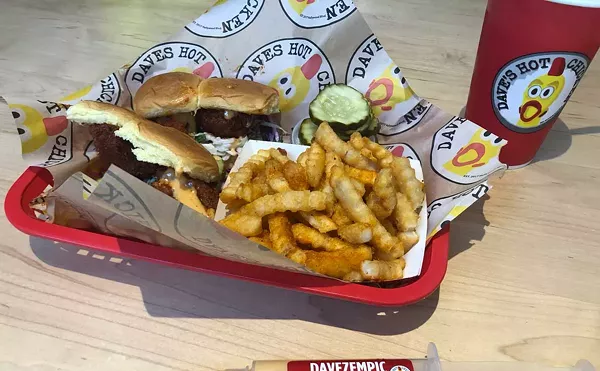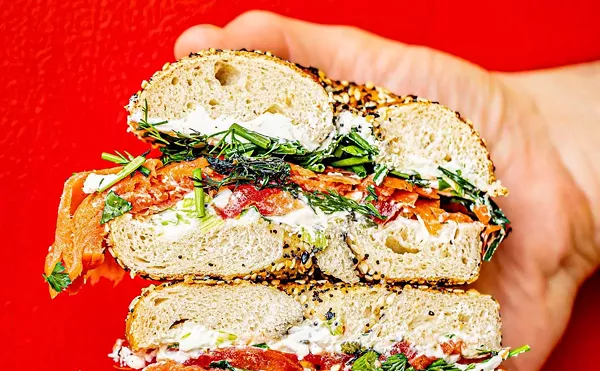For me, Louisiana is the culinary mecca of the United States. The abundance of fresh seafood and vegetables, the regional sausages and smoked meats, the generous — or rather, aggressive — use of spices by cooks with roots from around the world; all this combined delivers the best chow I’ve ever eaten. Of the many legendary dishes that are indigenous to the state, none more typifies the cuisine than gumbo. Some consider it a soup, others, a stew. I believe that gumbo is gumbo, deserving of its own category. I’ve seen recipes that include duck, squirrel, rabbit, chicken, turkey and guinea hen. Seafood gumbos can include fresh bass, crab, shrimp — fresh and dried — oysters and crawfish. Gumbo z’herbes is a vegetarian dish made with a mixture of mustard, collard, turnip and dandelion greens, cabbage and spinach. The combinations are as endless as chefs’ imaginations. I’m sure that there have been bad gumbos, but, happily, I haven’t known them.
Last week I met a woman who grew up in Louisiana and loves to cook. Naturally, we talked about food and have now begun an e-mail correspondence. We got to talking about gumbo, and I asked if there is a secret to a good roux, the mixture of fat and flour that’s used to thicken gumbo or other liquids. The fat can be lard, bacon fat, butter, shortening or vegetable oil. As for a secret, the answer is patience. You cannot rush a roux. Paul Prudhomme — the popular Cajun chef who is credited for the use of dry spices to coat foods such as blackened redfish — has a method for a quick roux, but it’s dangerous. First of all, it is easily burned. Secondly, you are easily burned. Hot roux is like molten lava, and it sticks.
Stay with the tried and true method — low heat and constant stirring. Most recipes say to heat the oil, then add the flour. Talk About Good, a cookbook published by the Junior League of Lafayette, La., advises putting the oil and the flour into a cold skillet, mixing them well and then turning on the heat. It worked great for me. Once the requisite cast-iron skillet is heated to a medium low — no higher than medium — begin stirring the roux, and make sure it doesn’t burn. If it burns, start over. A burnt roux is bitter and will ruin the gumbo. Stir it slowly — patiently — until it darkens to a peanut butter color and smells likes roasted nuts. For a stronger taste, let it darken to mahogany; the darker the roux, the stronger the nutty flavor. Typically, lighter roux is used with seafood. If the ingredients have stronger flavor, like duck, use a darker roux.
When the roux is done, which should take about 20 to 30 minutes, remove the pan from the heat and immediately add the vegetables, but not the okra. Stir until the vegetables have softened a little and set the skillet aside. If this whole process is intimidating or you lack the patience, bottled roux is available at Davison Fish Market.
Here’s a recipe for chicken and andouille gumbo.
This recipe is a point of departure from which you can develop your own recipes to suit your personal taste.
I just discovered Cajun Power Spicy Garlic Sauce. Great on gumbo and jambalaya. I also add some barbecue sauce.
Chicken and andouille gumbo
Roux
1/2 cup vegetable oil
1/2 cup flour
2 links of sausage – I use one of Marciante’s andouille and one of Parker House hot
sausage – both available at Davison Fish Market.
1 whole chicken or 4-5 boneless, skinless chicken pieces, cut into bite-sized pieces
At least one tablespoon of Creole seasoning (I like Zatarain’s) or 1 teaspoon salt, 1
teaspoon black pepper, 1/2 teaspoon of cayenne pepper and 1/2 teaspoon
dried thyme
1 large onion, chopped
1 green pepper, chopped
2-3 stalks of celery, chopped
2-3 cloves of garlic, minced
2 bay leaves
6 cups chicken stock
1/2 pound chopped okra, fresh or frozen
1 cup finely chopped green onion
1 cup finely chopped parsley
Hot sauce – I prefer Tabasco
Filé (ground sassafras)
Prepare the roux, and the rest of the ingredients. If you use boneless chicken, cut it into small bite-size pieces. I like the ease of chicken breasts, although the skin and bones from a whole chicken do give a richer flavor. Season the chicken with the spices. I slice the sausages lengthwise twice, then in half-inch pieces. Brown the sausage in a large skillet or Dutch oven over medium heat. As the fat renders, turn up the heat to medium high and brown the chicken. This is essential, as it really adds flavor to the chicken. Add a few teaspoons of oil if the sausage does not render enough fat. Push the chicken and the sausage to one side of the pot and add the okra, stirring it until the “strings” cook off. Add most of the stock and the roux to the chicken mixture, using the rest of the stock to deglaze the roux skillet, adding it to the gumbo pot. Bring everything to a boil. Turn the heat down and simmer the gumbo for at least an hour, stirring it occasionally until your house smells like the legendary Gumbo Shop in the French Quarter in New Orleans. Serve it over hot rice with the traditional garnishes of green onions, parsley and plenty of hot sauce and file. The latter has little flavor, but will thicken your gumbo.
Davison Fish and Seafood Market is located at 1520 E. Seven Mile Rd., Detroit. Call 313-893-1106.
Talk About Good, first published in 1967, is available at amazon.com for $19.95. This is a community cookbook that I highly recommend. One reviewer calls it a “Cajun cookbook bible.”
Jeff Broder is a chowhound for Metro Times. Send comments to letters@metrotimes.com





